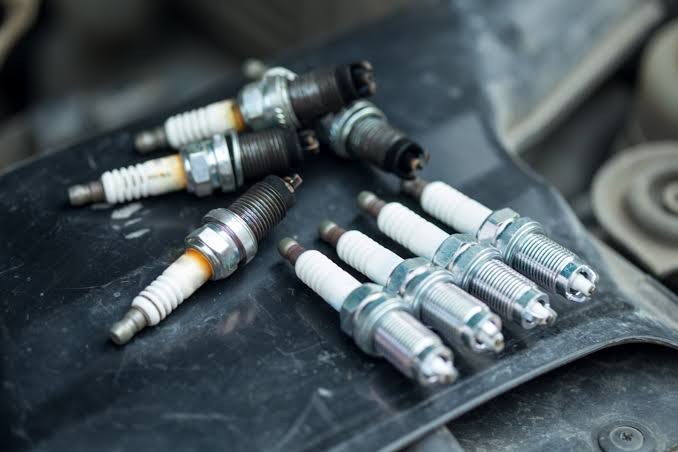Ninety percent of engine misfires can be traced back to faulty spark plugs or improper installation. That sobering statistic from automotive diagnostic data reveals a truth many car owners learn the hard way!
You think you're saving money by replacing spark plugs yourself. The reality? One wrong move can cost you thousands in engine repairs. I've seen countless engines damaged by well-meaning DIY enthusiasts who made what seemed like minor mistakes during spark plug replacement.
These aren't your grandfather's simple copper plugs anymore. Today's high-tech ignition systems demand precision that leaves zero room for error. Let me walk you through the five critical mistakes that destroy engine performance and how to avoid them.
Mistake 1: Ignoring Proper Torque Specifications
The Problem: You tighten spark plugs "until they feel snug" without using a torque wrench.
This cavalier approach kills engines faster than anything else I see in my shop. Under-torquing allows combustion gases to escape, creating hot spots that lead to pre ignition and potential piston damage. Over torquing is equally destructive, stripping threads in aluminum cylinder heads that cost $2,000+ to repair.
- The Fix: Always use a torque wrench. Most 14mm spark plugs require 18-22 ft-lbs of torque, while 18mm plugs need 28-32 ft-lbs. Champion Auto Parts provides detailed torque specifications that I reference daily.
If you don't own a torque wrench, invest in one. The $30 tool will save you thousands in potential engine damage. Thread the plug in by hand until it seats, then use the torque wrench for final tightening.
Mistake 2: Skipping the Gap Verification
The Problem: Assuming pre gapped spark plugs are correctly set.
Even premium spark plugs can shift during shipping and handling. An incorrect gap wreaks havoc on your ignition system, causing misfires, poor fuel economy, and accelerated electrode wear. I've measured gaps that were off by 0.010" or more from factory specifications.
- The Fix: Always check the gap with a feeler gauge, even on "pre gapped" plugs. Most modern engines require gaps between 0.028" and 0.060". Your owner's manual contains the exact specification for your engine.
To adjust the gap, gently bend the ground electrode using a proper gapping tool. Never use pliers or force the center electrode, as this can damage the plug's internal components.
Mistake 3: Cross Threading During Installation
The Problem: Forcing a spark plug into the cylinder head when it doesn't thread smoothly.
Cross-threading happens when you start the threads at an angle or rush the installation process. This mistake strips the aluminum threads in most modern cylinder heads, requiring expensive helicoil repairs or complete head replacement.
- The Fix: Always start threading by hand. Use this professional technique: place the spark plug in the hole and turn it counterclockwise (backward) until you feel it drop slightly. This indicates the threads have aligned properly. Now turn clockwise to install.
Some technicians use a piece of rubber hose over the spark plug ceramic to prevent cross-threading. The hose acts as a universal joint, allowing the plug to self-align with the threads. GoldwingDocs.com documents this technique extensively.
Mistake 4: Using the Wrong Heat Range
The Problem: Installing spark plugs with incorrect heat range specifications.
Heat range determines how quickly a spark plug transfers heat away from the combustion chamber. Too hot a plug causes pre ignition and electrode melting. Too cold a plug leads to carbon fouling and misfires. Either scenario reduces performance and can cause serious engine damage.
- The Fix: Stick religiously to manufacturer specifications. The heat range number on the spark plug must match your engine's requirements exactly. NGK Spark Plugs explains that using the wrong heat range can cause overheating, electrode wear, and pre-ignition that leads to piston damage.
When in doubt, consult your owner's manual or contact the dealership. Aftermarket "performance" plugs often use different heat ranges that can damage stock engines.
Mistake 5: Neglecting Cleanliness During Installation
The Problem: Allowing dirt and debris to fall into the cylinder during spark plug replacement.
This seemingly minor oversight causes major problems. Foreign particles score cylinder walls, damage valves, and contaminate the oil system. I've seen engines require complete rebuilds because someone didn't properly clean around the spark plug wells before removal.
- The Fix: Clean around each spark plug thoroughly before removal. Use compressed air to blow out debris from the plug wells. Keep the area covered while working on other cylinders.
Fender Bender identifies "lack of proper cleaning" as one of the most common installation mistakes professionals see.
These five mistakes account for the majority of spark plug-related engine problems I diagnose. Each one is completely preventable with proper technique and attention to detail.
Remember: spark plug replacement affects your engine's core operation. Take shortcuts at your own risk. Follow manufacturer specifications precisely, use proper tools, and maintain cleanliness throughout the process.
Your engine will reward you with smooth operation, optimal fuel economy, and years of reliable service. Make these mistakes, and you'll be shopping for a new engine sooner than you think.

Comments (0)
Please login to join the discussion
Be the first to comment on this article!
Share your thoughts and start the discussion